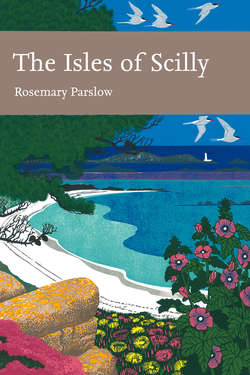Читать книгу The Isles of Scilly - Rosemary Parslow - Страница 31
Arable cultivation
ОглавлениеEarly cereal crops on Scilly included six-rowed (and possibly two-rowed) barley Hordeum vulgare in both the hulled and naked varieties, which have been identified from several archaeological sites. Other crops that have been recorded are emmer wheat Triticum dicoccum, Celtic bean Vicia faba var. minor and oats Avena sp. The origins of domestication have been identified in the area of the Near East some 9,000-10,000 years ago, and barley and other crop species must have gradually made their way to Europe with the early inhabitants and through trade (Smith, 1995).
There is evidence of arable cultivation in the Isles of Scilly at least as far back as the Bronze Age. On Samson archaeologists found a cache that consisted of a cleaned crop of naked barley, probably six-rowed barley, confirming this was grown in the Early Bronze Age. Six-rowed barley (and possibly also two-rowed barley) was clearly an important crop in Bronze and Iron Age Scilly both in the hulled and naked forms – although most of what has been found is the naked variety. Hulled barley has been found at Middle and Late Bronze Age sites. Barley has also been identified from post-medieval deposits at Steval Point, St Mary’s. Emmer wheat and Celtic bean were found with both kinds of barley at sites at Porth Cressa, St Mary’s, and Porth Killier, St Agnes. At Halangy Down, besides the older lynchets beneath those of the Romano-British settlement, a pot was found nearby with impressions of grain in the clay. One intriguing find was of a large number of seeds in the post-occupation layers of a hut at West Porth: these were dated to Late Bronze Age/Early Iron Age and are of great interest as they were of common arable weeds (Ratcliffe & Straker, 1996). Unfortunately there are very few records or remains of plants to give more than a hint of the wild flora of arable fields.
Arable weeds identified from Bronze Age sites in Scilly include vetches, knotgrass Polygonum sp., chickweed Stellaria sp., black bindweed Fallopia convulvulus, small nettle Urtica urens, corn spurrey Spergula arvensis and red goosefoot Chenopodium rubrum. A curious occurrence was ploughman’s spikenard Inula conyza, a plant more usually growing on calcareous soils. It is possible that some plant seeds (for example corn spurrey and knotgrass) were eaten in a kind of porridge. Certainly weed seeds continued to be found from archaeological sites after the Bronze Age, as did emmer and barley. Unfortunately there is not a great deal of evidence of Iron Age cultivation. Only two sites are recorded, Shipman Head, Bryher, and Halangy Porth, St Mary’s (Ratcliffe & Straker, 1996).
There is little information on arable plants from the Late Roman and Early Medieval periods, although there are unspecific barley and oat records from the seventh/eighth-century layer and wheat and barley from the tenth to thirteenth centuries. Weed seeds, most of which could be arable weeds, were also recorded. Some of the plants that are still found in Scilly are believed to have been early introductions as contaminants of seeds or goods brought in from the Continent, even from as far away as the Mediterranean.
